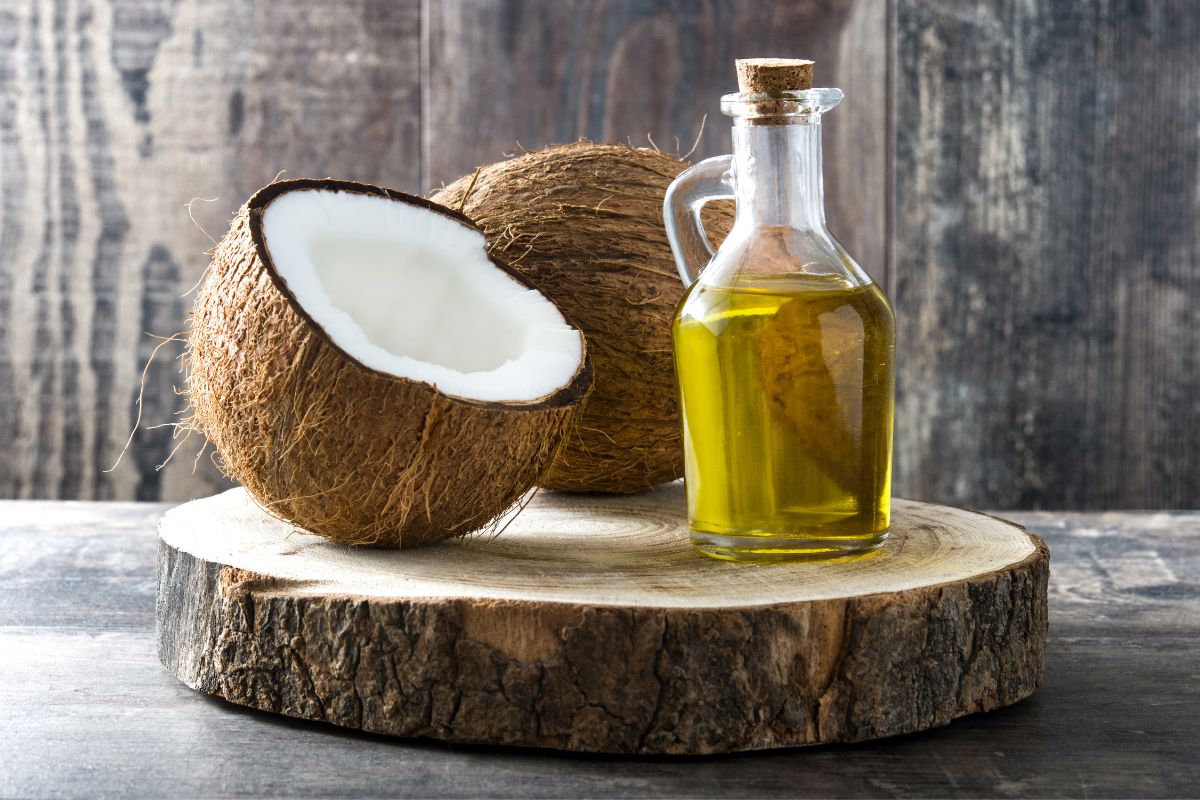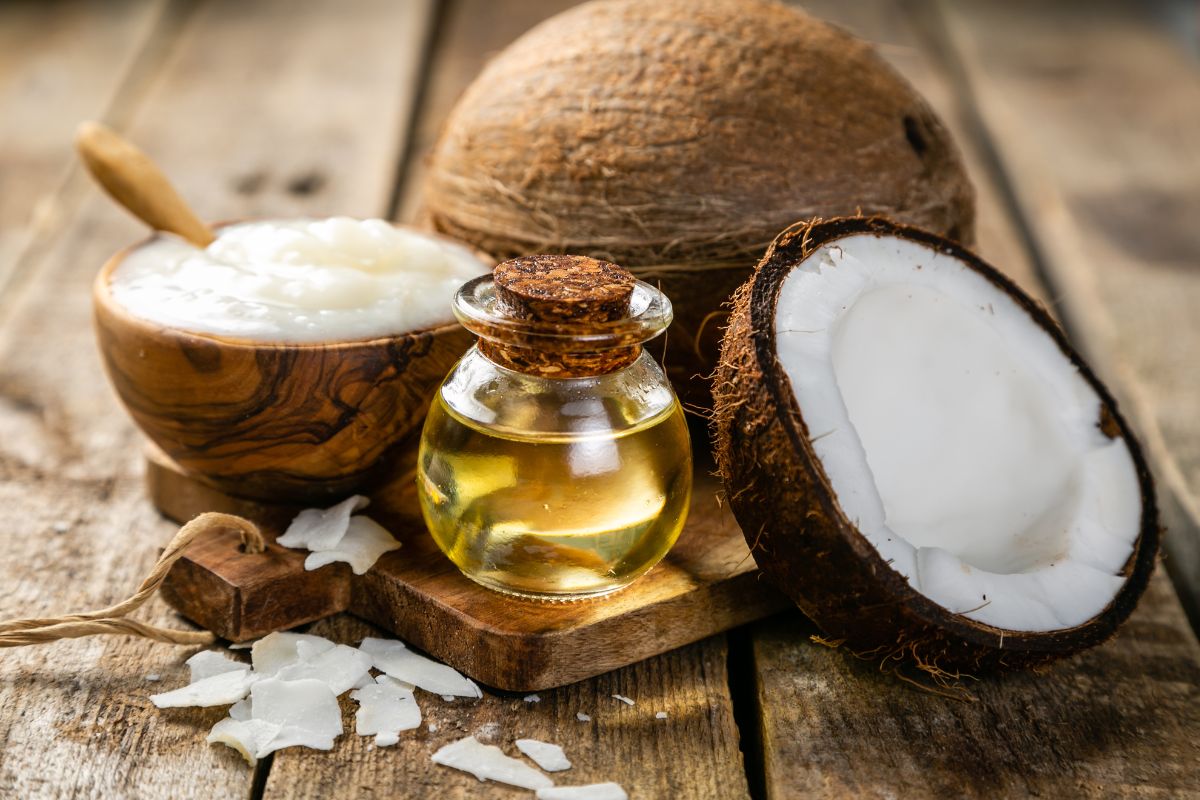Coconut oil has become an increasingly popular health food, praised for its many health benefits. But does this versatile oil have a shelf life? Is it possible for coconut oil to go bad?

In this article, we’ll look at the shelf life of coconut oil itself and how to store your coconut oil correctly to ensure it stays fresh.
Can Coconut Oil Actually Go Bad?
Coconut oil is a staple product in many kitchens, as it has an impressive shelf life and versatility in its uses.
However, like all perishable items, coconut oil does eventually go bad and should be disposed of appropriately.
It’s important to ensure that you take proper precautions to prolong the lifespan of your coconut oil by storing it in a cool, dark place with the lid firmly secured; otherwise, it can spoil quickly due to exposure to moisture or light.
Once past its use-by date or if there are any signs that the coconut oil has gone rancid, such as discoloration or a foul odor – it should be thrown out immediately.
How Do You Know If Your Coconut Oil Has Gone Bad?
The superior quality of coconut oil makes it an excellent ingredient for cooking and beauty. It has healthy saturated fats, provides high amounts of medium-chain fatty acids, and offers a unique aroma and taste.
Unfortunately, due to its sensitive nature, coconut oil can quickly go bad if stored incorrectly. To tell if your coconut oil has gone rancid with just five signs, you should first observe the appearance, odor, and flavor of the product.
1. Chunky
When it comes to quality coconut oil, texture plays an important role. A high-grade oil will have a smooth and uniform consistency, with no chunks or lumps in sight.
- High-grade coconut oils should look and feel like something between a viscous liquid and a soft solid.
- It should be easy to scoop out of the jar but still remain slightly malleable at room temperature.
- Any noticeable graininess would indicate that the oil has broken down and gone bad due to high temperatures or extended storage.
Seeing changes in texture does not necessarily mean that the coconut oil has gone bad. If your oil has started to get more viscous over time from being stored in cool temperatures, this is perfectly fine!
Similarly, if your oil starts becoming more of a solid as you accidentally leave it on the countertop for too long, don’t worry – just transfer it back into colder surroundings and let it soften up again.
2. The Color Is Yellow
Coconut oil is a staple in many kitchens around the world. It’s versatile and has numerous health benefits, making it a great choice for cooking and baking.
- When liquid, proper coconut oil should be clear with a slight hint of yellow.
- Once it’s exposed to cooler temperatures, coconut oil will solidify into a milky white paste that can easily be scooped out with a spoon.
- In most cases, the color of your coconut oil is an indicator of its freshness and quality; if an unusual hue of yellow has appeared, then chances are that it has gone bad.
- Coconut oil that sours or turns yellow means you should discard the product immediately, as this indicates that the fats within have begun to oxidize and break down long before their expiry date.
3. A Sour Scent
The sour or bitter scent of coconut oil is usually a sign that it has gone bad, as it is no longer safe to be used for either cooking or beauty purposes.
Refined-style coconut oils should have a completely neutral scent, while some virgin coconut-style oils should have a light, sweet scent if their quality is good. If the smell of your coconut oil is bitter or sour, then this indicates that it’s time to throw it out and get some new coconut oil instead.
4. Sour Taste
Coconut oil is a popular fat used in cooking and baking, as well as body care products. Many people enjoy the natural flavor that comes from using unrefined, virgin coconut oil.

Unfortunately, poor-quality coconut oil can develop an unpleasant sour taste over time. This is due to the breakdown of components in the oil and the oxidation of fatty acids.
- A sour taste in coconut oil often occurs when it has gone bad or been improperly stored for a long period of time.
- Signs that the oil may have spoiled include discoloration, sour smell, and off-taste.
- Even if it looks ok on the outside, tasting small amounts of the product can be very telling.
- If your coconut oil has turned sour, it’s best to discard it right away as eating or using contaminated coconut oil could lead to food poisoning or other health issues.
5. Black Oil Spots
Black oil spots can be a nuisance for oil containers and often look like mold or dirt. These little blemishes can occur when the oil has been stored in incorrect conditions and has not been filtered properly.
Not knowing the source of these spots means that it is impossible to tell how bad the contamination is, making it necessary to discard the product as a precautionary measure.
The presence of black oil spots could be caused by several different contaminants such as bacteria, fungi, microbes, or even plant matter.
Final Thoughts
Coconut oil can actually go bad just like any other food or beauty product. The most common signs of spoilage are discoloration, sour smell and off-taste, and black oil spots.
It’s important to buy real, high-quality coconut oil and store it in an airtight container to help keep it fresh and tasty for longer periods of time.
Frequently Asked Questions
Firstly, always store coconut oil in a cool, dark place. Heat and light are the number one enemies of an oily substance like this and will actively degrade its quality over time.
This means never storing your coconut oil near direct heat sources like a stove or an oven.
Keep the jar tightly sealed and make sure that no moisture gets inside – you may want to wrap the container with plastic wrap before putting on the lid just to be extra careful.
- How To Reheat A Cheesesteak - November 5, 2023
- What Are Three Must Have Kitchen Knives? - September 22, 2023
- How To Protect Edges Of Pie Crust - June 15, 2023








